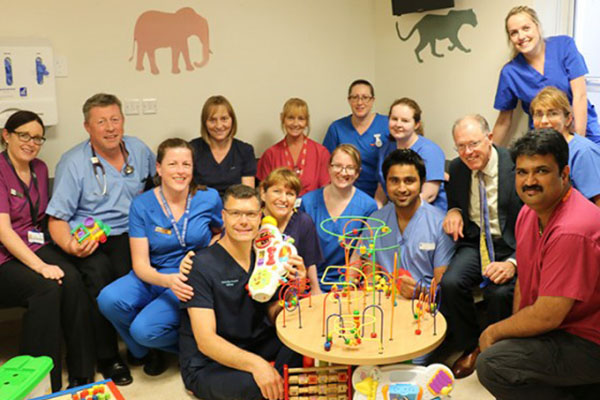You are here
New Dedicated Paediatric Area opens in UHG

The newly developed dedicated paediatric area within the emergency department at University Hospital Galway opened its doors to paediatric patients in June. The new paediatric area was reconfigured from an existing space to facilitate the development and will accommodate all paediatric patients from 0 – 16 years of age and will cater for both medical and surgical patients. The emergency department at University Hospital Galway sees approximately 17,000 paediatric patients per annum, this accounts for approximately 20-25% of all presentations to the ED. The new paediatric ED comprises of 6 cubicles, 2 isolation rooms, a separate waiting area from the adult waiting area and a separate access door into the paediatric ED. It is fully compliant with the national HSE charter ensuring complete audio-visual separation from the adult ED area. Children will no longer have to share the same waiting area as adults. The separate area is compliant with the Children First hospital policy, ensuring the safety and privacy for all paediatric patients presenting to the department.
Chris Kane, General Manager, GUH said, “The new dedicated paediatric area in the emergency department will improve how we care for our younger patients. They will now be seen in a private and family-friendly setting, where they can feel as comfortable as possible. This development has been achieved through effective team working and has been an inspiring development for staff in the emergency department as well as the paediatric team themselves”.
Dr Ethel Ryan, Clinical Director for Women’s & Children’s Directorate & Consultant Paediatrician, UHG stated, “The new paediatric ED area benefits the paediatric patients and their families by providing a safe and secure environment for them to be reviewed in, with complete separation from the adult area. This new area provides them with full privacy and safety as per the National Children First Policy. With the increased number of clinical cubicles, paediatric patients will be seen quicker which improves patient flow through the department and reduces their waiting time to be seen.”

